So, you have come to a conclusion that the company needs a new website. You are now likely to start looking for a web agency. You’ll find the one you like and… what’s next?
What to say on your website to get an action from your customer?


The crucial question when making a website is what you want to communicate and to who. What content should go on your website? The success of your website will, first of all, depend on how well you answer this question. Second, it will depend on the quality of the design. Goes without saying, the website is a part of a complex mechanism of marketing, sales, and other business efforts, and it needs to be treated as a part of the whole. But this article is not about marketing or sales; I want to talk precisely about the first steps of making a website.
Most clients severely underestimate their role in a website’s success and the inputs they need to provide.
I’ve been working on web production from an agency standpoint for over a decade now. The thing is, you just can’t fully delegate decisions on the website’s content to your agency. They simply don’t have enough knowledge about your business, and they don’t own these decisions. It is much more effective to get everybody together to go through the process.


Who’s “everybody,” you might ask?
You will need all the stakeholders who use the website for their business tasks. Most likely, it’s the top management at the marketing and sales departments, recruiting, PR and communications, etc.
The rule of thumb when choosing the people to include in the process is to ask yourself whether you need to consult or get feedback from this person on the new website before launching it. If the answer is yes — include them.
On a side note, if there are too many such people, you should get the team together and decide who will take part in the process, and who consciously gives up their voice for the sake of manageability. It’s best to have a team of 3-6 people. This team will have a workshop with the agency and go through a framework that will help you understand what and why to tell about your business.
The framework is meant to discover how to get customers to interact with the content and messaging on your website. To make the framework clearer, I will illustrate the process of how we used this framework when creating our studio’s website, bachoodesign.h-web.pp.ua.
Why do you need a website?
Ultimately, you want your audience to do something. Not necessarily on the website itself, not necessarily immediately, but at the end of day, it’s about getting people to perform an action.
So, ideally, the scenario is as follows:
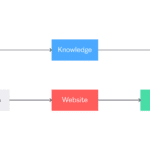

Who is your audience?
Who are you communicating to? They might be your current or potential customers, partners, employees, followers, fans, etc. It is okay to identify multiple audiences. Of course, the more you know about your audiences, the better.
Here are the audiences we identified for our website.
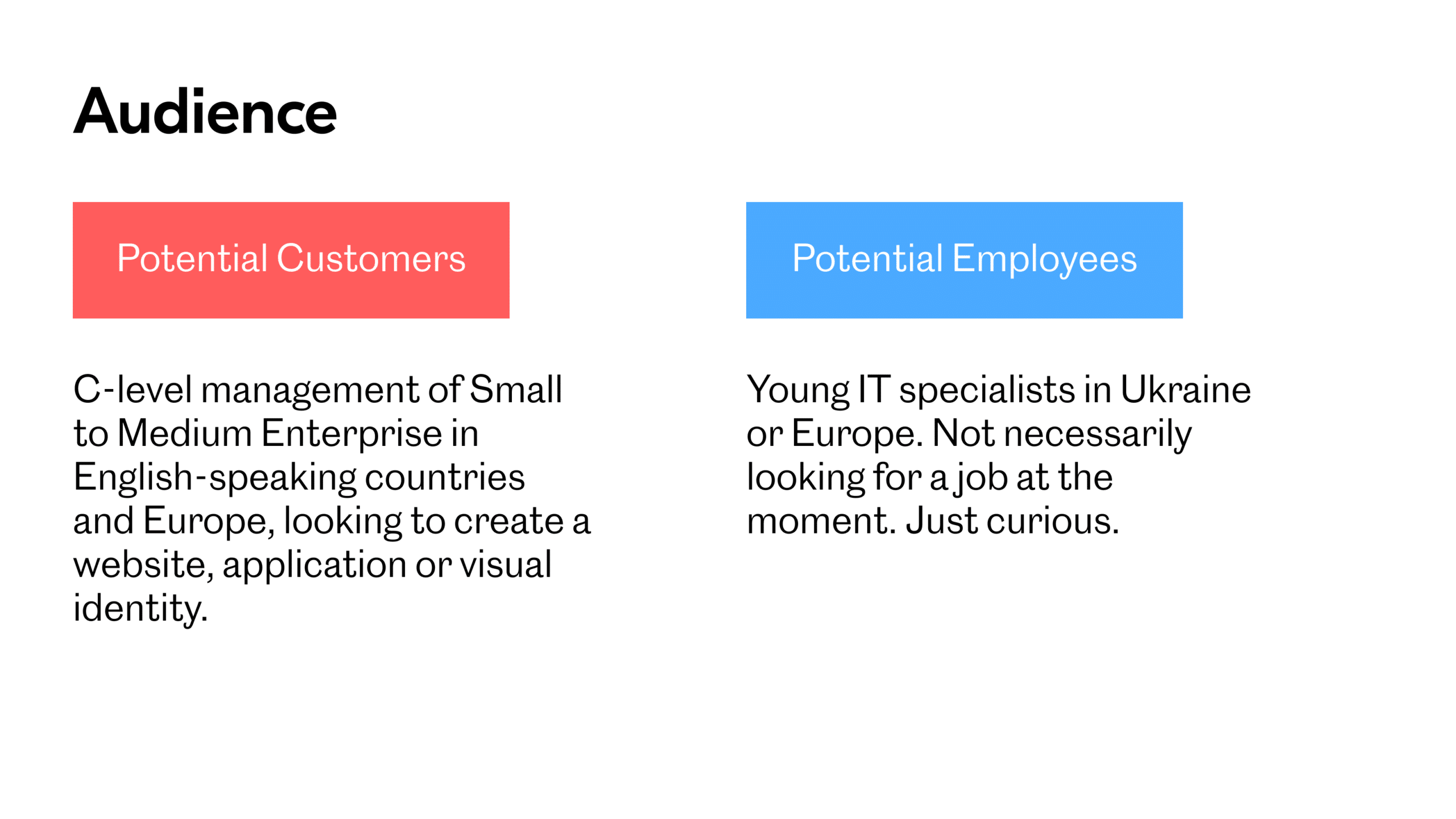

Key actions and conclusions
What do you want your customer to do on the website, and what do you want them to learn or remember after visiting it? For websites that sell services or goods online, the action is obviously more important. Yet, in many cases, the website is not where the actual sale happens, and you should concentrate on the knowledge and image that your website creates.
Here’s what we had:


Request for information. What is the audience looking for on your website?
What information are they searching for, what kind of questions do they have in mind? What might interest them? Here are the questions we think our audiences have when visiting the studio’s website:
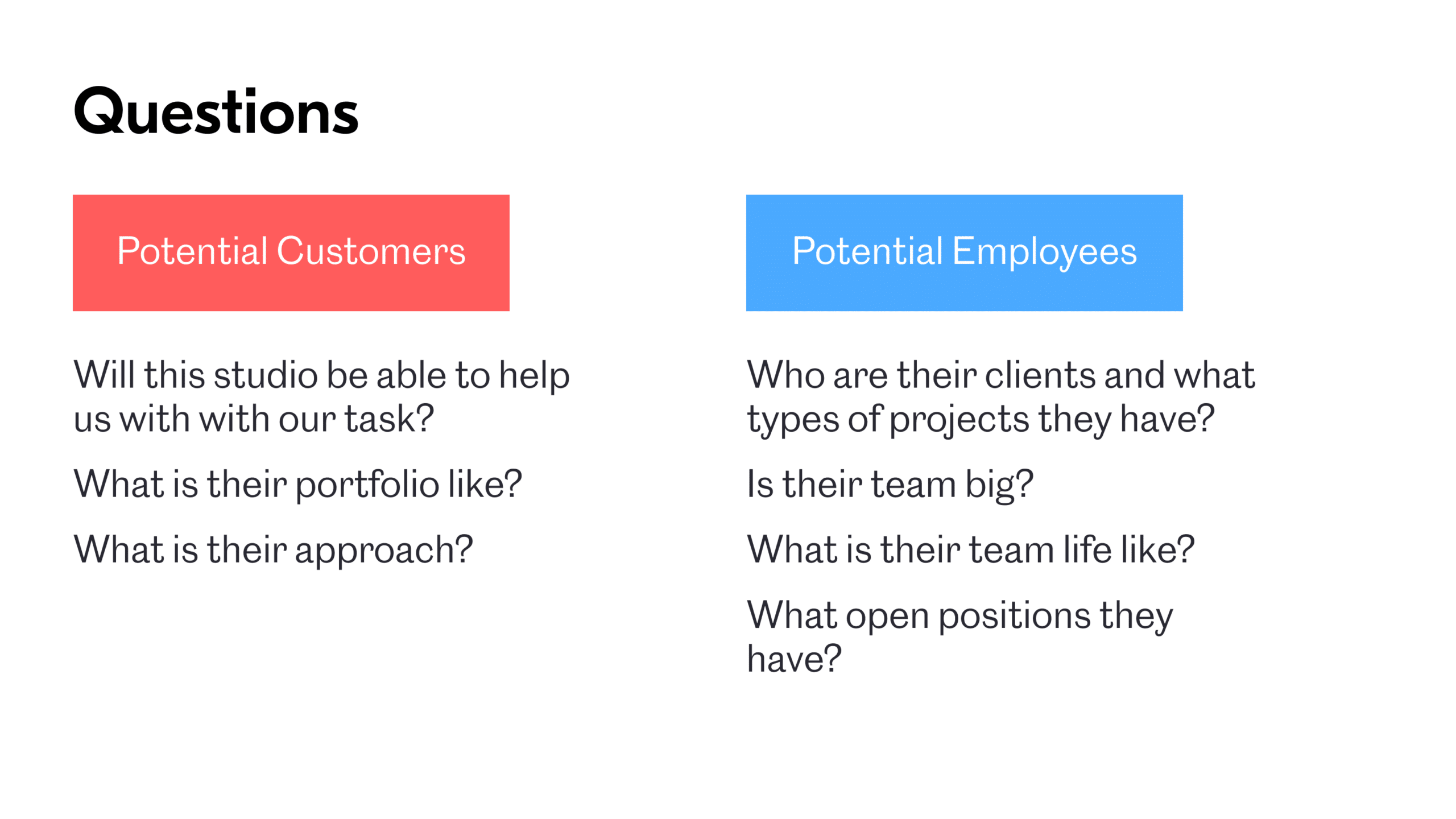

Barriers
What might prevent your audience from acting or making key conclusions? Concerns, trust issues, lack of knowledge, fear, or laziness — anything that would make people have doubts about your business. This is the most important part of the framework because these are the barriers you should work with on your website.
The barriers we have identified for our audiences:
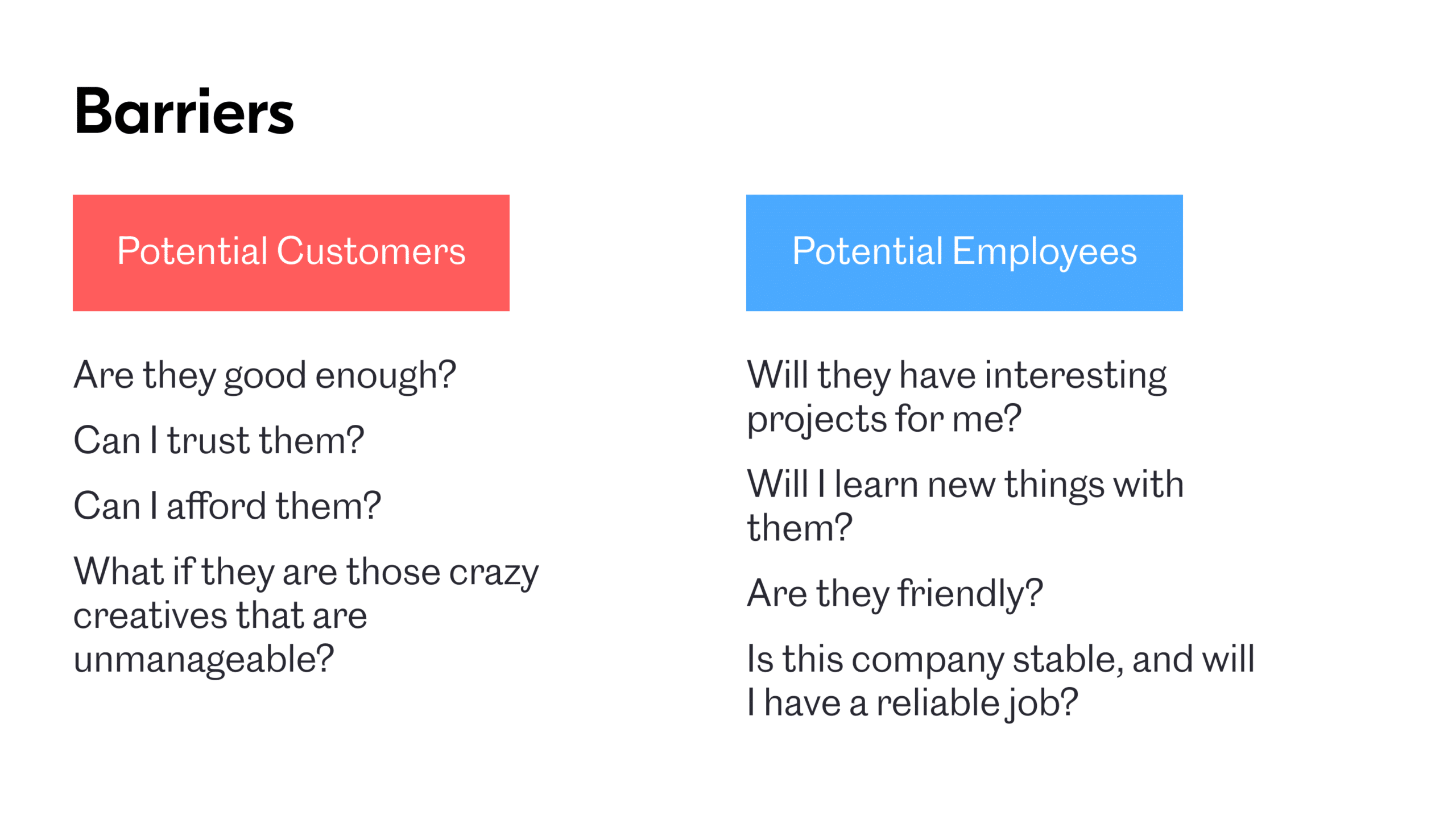

Proof
What facts can you tell about your business that will destroy the barriers? What proof can you show to convince your customer? Our example is:


The magic happens on the crossing of the customer request, their barriers, and your proof.
The art is to feed the reader with the proof while answering their information request. And this is the creative task your agency should be solving.
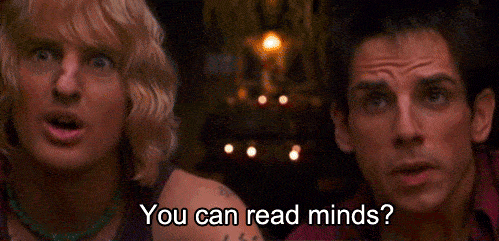

Now let’s talk about the role of your agency in this process.
Of course, a good agency would invite you to a workshop. The workshop doesn’t need to have this framework, but we use it in our agency. There are plenty of other ways to define the website.
The agency can help you identify the barriers or the information request by talking to your audience and through research. I recommend taking research with a grain of salt. Sometimes it provides misleading information.
The best place to seek answers is your own team, and only you can gather your team together to work on these answers. And the agency would be able to give you a fresh perspective on the situation and ask questions that “insiders” wouldn’t think of.
